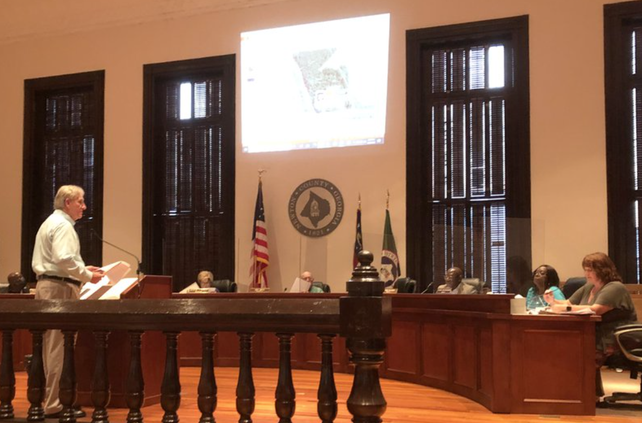COVINGTON, Ga. — A moratorium did not affect some development plans officials considered in recent months because they were submitted before county commissioners approved the ban in January.
But some members of the public still are confused about how the county planning commission can consider plats for approval when a moratorium is under way, said commission Chairman Landis Stephens.
"They think we're pausing on all growth," Stephens said.
The Newton County Board of Commissioners recently voted to extend until Sept. 21 the moratorium on new applications for zoning petitions and petitions for preliminary plats and concept plans for new residential development.
County planning commission members indicated Tuesday night that some residents had not heard details before their meeting about preliminary plats and had concerns about them.
Those concerns apparently led the planning commission to delay action until Aug. 24 on a preliminary plat for a multi-use project containing 20 townhomes and a retail center on Salem Road near Georgia Hwy. 81.
Stephens also asked if county commissioners knew about the plans, as well, since they often hear from residents about planning commission issues.
Development Services Director Judy Johnson said the department she leads publicizes what will be on the agenda prior to the meeting by publishing information in the county’s legal organ.
“There was never any smoke and mirrors,” she said.
She said preliminary plats the Newton County Planning Commission considered Tuesday, July 27 — and a third still awaiting action — were the last three submitted before the moratorium went into effect.
Johnson said the county development ordinance only allows the planning commission — not the Newton County Board of Commissioners — to approve preliminary plats.
She also noted a county commissioner appoints each planning commissioner from the district where they live and "you should be reaching out to that commissioner” with any concerns, Johnson said.
If the planning commission approves a preliminary plat — which typically is a rough outline of plans — the Development Services staff handles the other steps that end with approval of final plans for placement of roads, home lots and other amenities.
Johnson said she told the board of commissioners previously there were pending petitions the moratorium would not affect because they were submitted before it took effect.
She said she told the board of commissioners some applications take “months to move forward.”
“We made very clear there were three zoning petitions in the ‘hopper,’ there were preliminary plats in the ‘hopper,’” she said. “Staff has not realized that moratorium.”
Board of commissioners members first approved the moratorium Jan. 19 so they could consider updating the county development ordinance to take into account “current trends for residential development” the ordinance may not “adequately” address.
The “trends” include building densities, lot sizes and more that are common in newer residential subdivision plans than when the ordinance was written, officials said.
Commissioners voted to extend the moratorium after voting earlier this year to extend it to July 20.
Johnson told the board of commissioners the extension to September was needed because her staff had not been able to schedule a work session with the board.
She said the work session would allow the the planning staff to work with the commissioners on specific changes they wanted to make in density requirements and other areas in the ordinance, she said.
County planning staff members need “direction from the board” to consider specific changes in the ordinance — which allows up to 12 units per acre in some mixed-use, multi-family developments, Johnson said.
She said she was “not sure” the board wanted to retain the standards for multi-family as well as single-family developments that allow the developer to provide a wide range of amenities.





